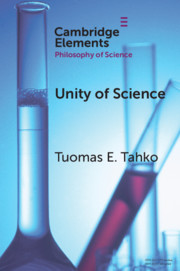Refine search
Actions for selected content:
4 results
5 - A Functional Approach to Context
- from Part II - Philosophical, Semantic, and Grammatical Approaches to Context
-
-
- Book:
- The Cambridge Handbook of Language in Context
- Published online:
- 30 November 2023
- Print publication:
- 14 December 2023, pp 116-139
-
- Chapter
- Export citation
Chapter 3 - Realising The Enraged Musician
-
-
- Book:
- Sound and Sense in British Romanticism
- Published online:
- 24 August 2023
- Print publication:
- 07 September 2023, pp 60-89
-
- Chapter
-
- You have access
- Open access
- HTML
- Export citation

Unity of Science
-
- Published online:
- 18 January 2021
- Print publication:
- 11 February 2021
-
- Element
-
- You have access
- Open access
- HTML
- Export citation
A NEW PROOF OF THE REALISATION OF CUBIC TABLEAUX
-
- Journal:
- Bulletin of the Australian Mathematical Society / Volume 87 / Issue 2 / April 2013
- Published online by Cambridge University Press:
- 25 January 2013, pp. 207-215
- Print publication:
- April 2013
-
- Article
-
- You have access
- Export citation
